The Scandinavian people with revolutionary ideas and sometimes barbaric practices, the Vikings have a history mixed with fear and fascination. Dive into the story of the great Viking discoveries, and navigate in the waters of a troubled History.
Warriors, pirates, looters. Violent, bloody, merciless. Many of them are the energetically qualified to the Viking people. Legendary population, almost mythological, it intrigues us as much as it scares us. Yet, did you know that the majority of the writings containing the stories of these " terrible Vikings" were written by the Christians, a population victim of their colonization?
So if, together, we grant the benefit of doubt to this pagan people? Great explorers thirsting for discoveries, architects, pioneers and traders of great talents, today we devour you the unknown portrait of the Vikings.
In this journey in time, we propose you to re-write together, the History of their greatest discoveries.
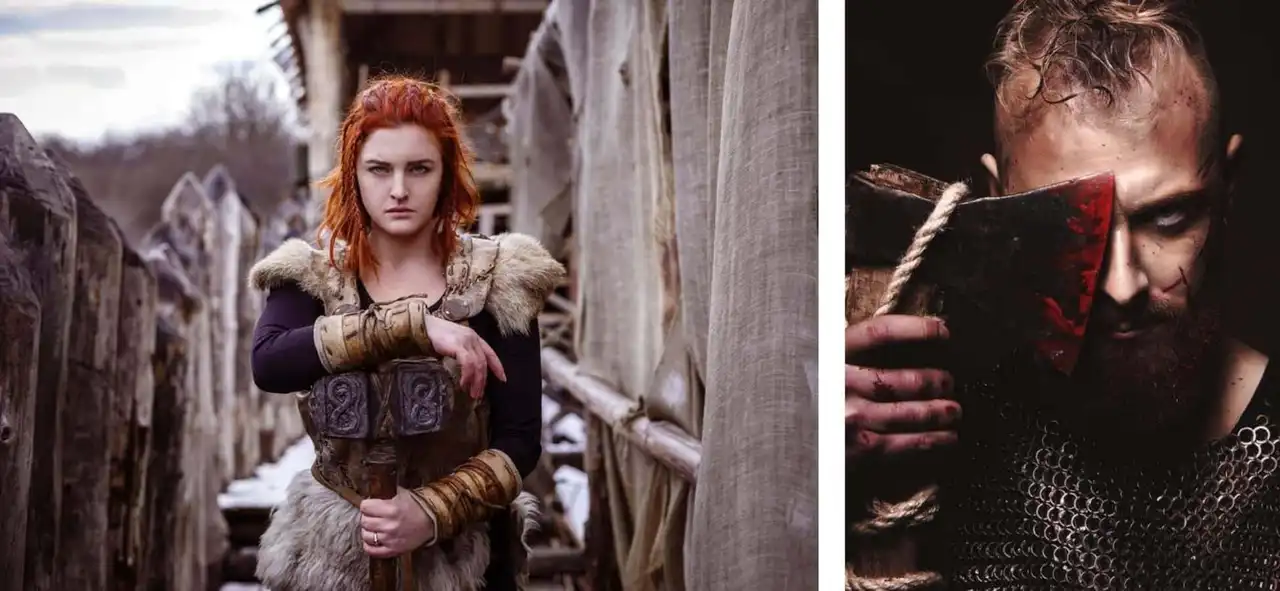
Photo credit: Shutterstock – Selenit & Feel Freedom
In this first episode, let us stop on a land almost as legendary as the people who discovered it, Iceland . In the footsteps of the first Viking explorers, you are in sublime land in hostile territory.
1. Discovery of the Ice Island
If we know that the Vikings are from Scandinavian countries, such as Sweden or Norway , it is difficult to date the exact appearance of this people, estimated around the year 750. And for cause, until the 12th century, the Vikings appeared only in the Christian manuscripts of the ancient kingdom of England, the land of the first barbarian invasions. An inevitably biased vision of this people, and with the terrible legends that we know today about a bloody population.
It is only four centuries later that the first manuscript written from the hand of the Viking heirs appears: Landnámabók . So nait the first saga of history . For the first time and in an extremely detailed manner, the book describes the first real discovery and colonization of the Scandinavian people, that of Iceland.
Naddoddr and Gardar Svavarsson: The first
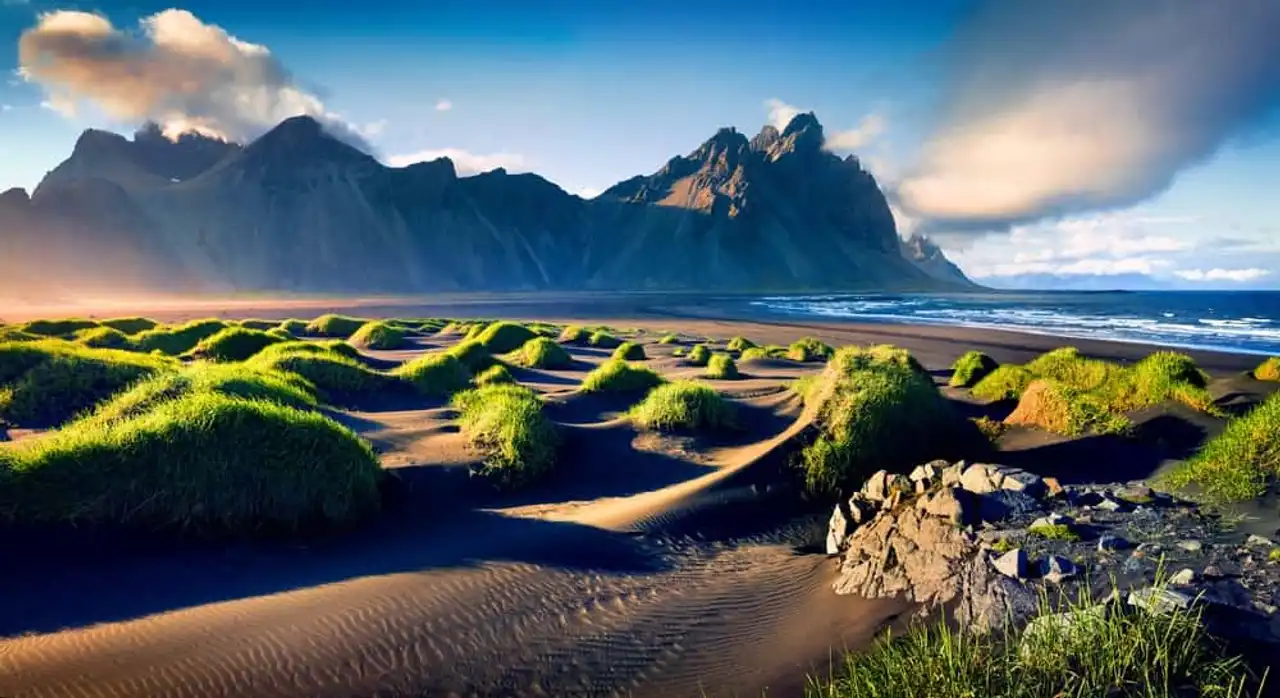
Black Sand Moon – Stokksnes, Iceland - Photo credit: Shutterstock – Andrew Mayovskyy
It is therefore based on the writings of the Landnámabók that we begin our story, with Naddoddr a Norwegian Viking whose evocation brings us back to the middle of the ninth century. We are in 861 when, wishing to return to the Faroe Islands, Naddoddr and his crew drift. Then lost between the North Sea and the Sea of Norway, the sailors finally failed on the East coast of Iceland, in Reyðarfjall.
Determined to find their homeland to become the first settlers, Naddoddr and his crew do not sneeze, and return to the sea quickly. At their departure, the snow began to fall on the Icelandic coast. Inspired by this white coat, the Viking decided to baptize the country Snaeland the land of the snow.
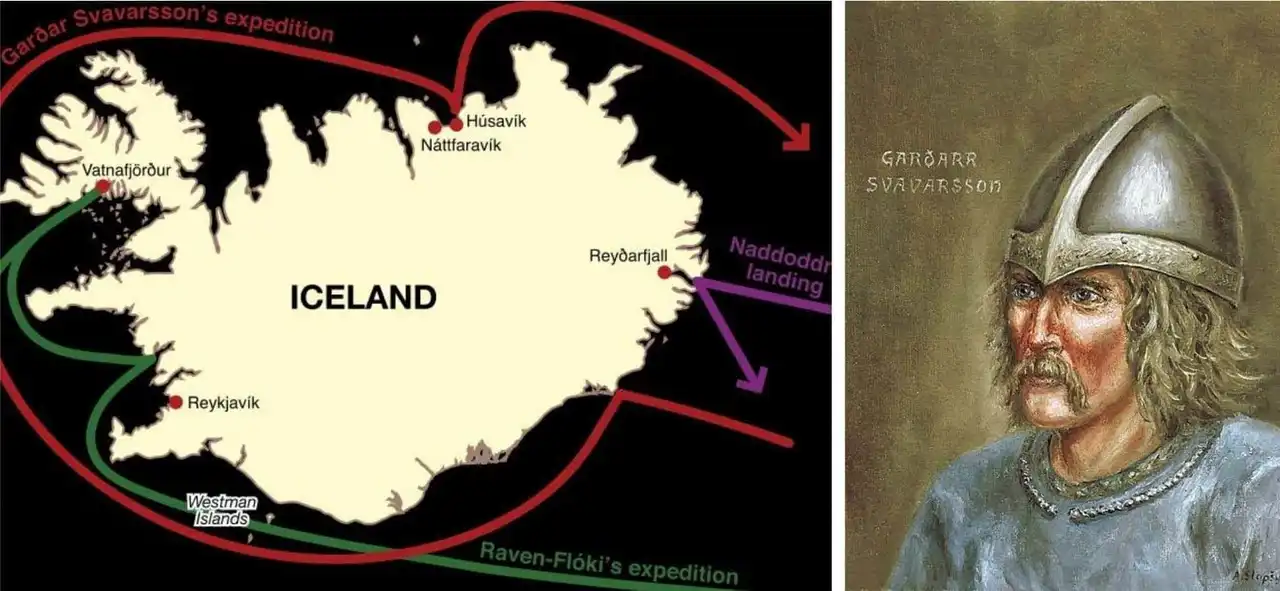
Map of discoveries of Iceland / Portrait of Gardar Svavarsson - Photo credit: Wikipedia – Max Naylor & Artūras Slapšys
For several years, Snaeland Stay uninhabited. Until this new time, randomly brings back a new Viking crew: that of Swedish Gardar Svavarsson . In search of his father-in-law’s inheritance, Gardar takes the sea towards the Hebrides . His drakkar finds himself caught in the middle of a storm, resistant to winds and tides, but unable to fight against currents, which eventually deviates his way to the North.
Once on the east coast, Gardar and his men begin to bypass the territory. But here it is: the land they are crowding has no borders. Gardar Svavarsson is therefore the first Viking to have defined Iceland as an island. With this discovery and conquered by the beauty of the landscape, it makes the choice to spend the winter there. It is in the province of Skjálfandi, now known as Húsavík, that he established the first Viking camp in Iceland.
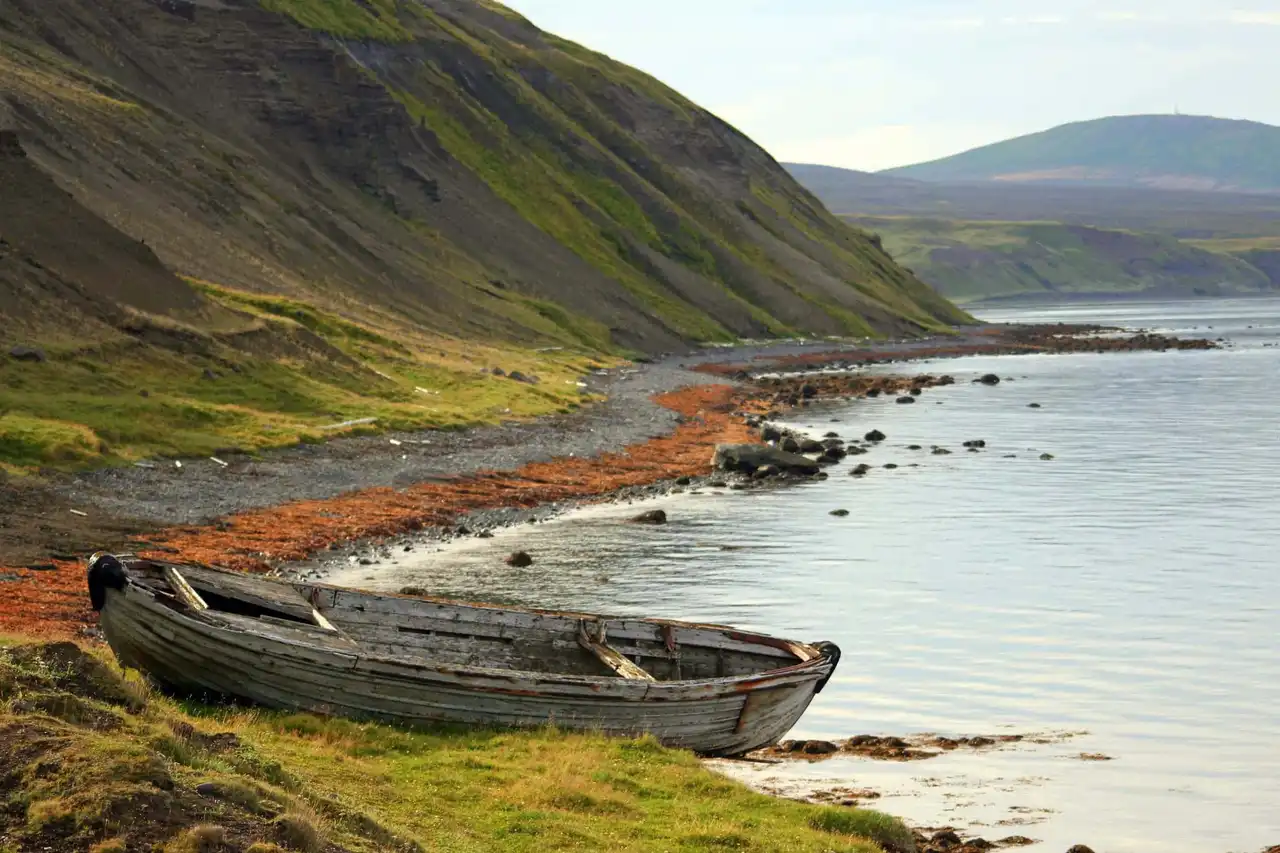
Tungulending, bordering the province of Husavík, Iceland - **Photo credit: Flickr –
VisitHusavik
**
Once winter and soothed waters, Gardar Svavarsson decides to go back to Norway, in the idea of sharing his crazy discovery to other Vikings, never apologizing good stories. But when we leave Snaeland one of his slaves, Náttfari , flees with a man and a woman, thus becoming the first permanent residents of a land that will soon become Iceland, land of ice.
Flóki, the architect with the corbeaux
Our story continues, and takes a decisive turning point in Iceland’s history, as in the history of Vikings. And if we were to customize this turn, he would take the name of Flóki Vilgerðarson , also appointed Flóki aux corbeaux .
We are only a few years after the return Gardar on Norwegian lands, and the legend is on. A legend constituting the history of an uninhabited land, full of beaches and plains. A blessed land of the gods, ready to welcome pagans and cattle to create new trades and expand Scandinavian colonies.
To these stories, Flóki , descendant of the ancient kings of the province of Hedemark – but more attracted to adventure than to power – is not insensitive. Without being able to deny his appeal to the gods or his desire for discovery, the Viking makes very quickly the choice to ride a crew to conquer this divine land.
After the construction of the boat was completed, he then sought men or women ready to accompany him. Only few are those who wish to accompany him on such a great adventure. After all, this new world fascinates as much as it scares.
Never mind, after bringing together three men, Flóki embarks on his modest drakkar. Head north.
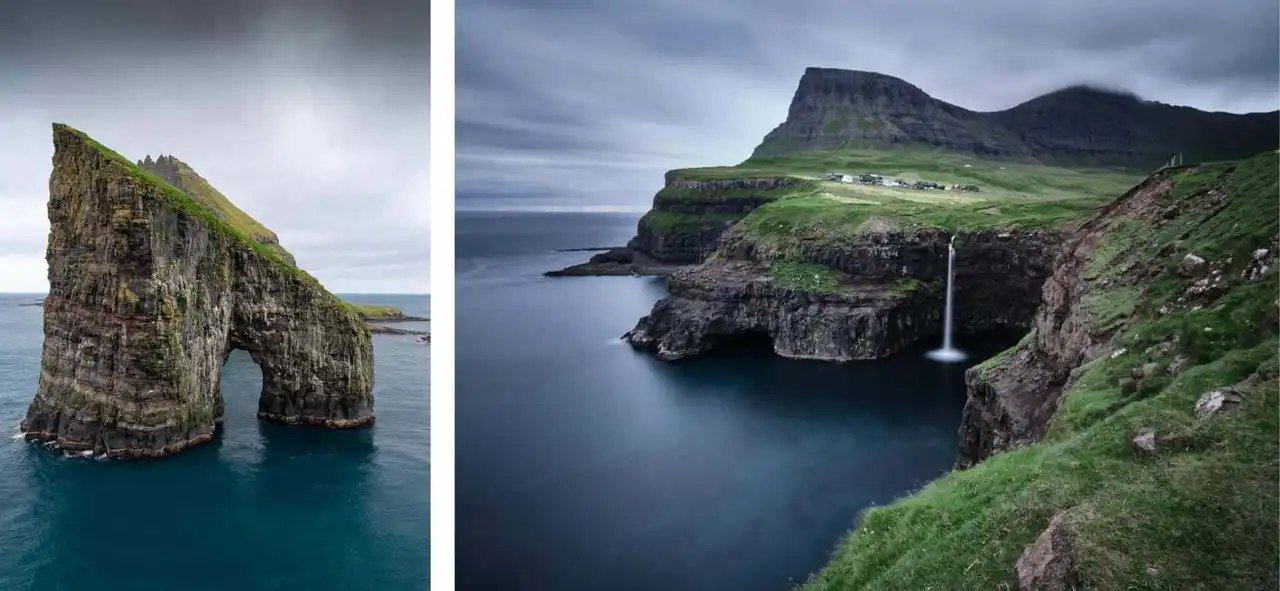
Drangarnir & Gasaladur, Faroe Island - Photo credit: Shutterstock – Costas Kariolis & Albert Photo
In this wealthy crew, Floki welcomes three curious travellers, known for their orientation faculties: crows. After passing the Faroe Islands, he released a first raven, which unfortunately returned to the Faroese coasts. The next day he released a second. Once again, the bird goes back. So, Flóki decides to be led by the current several days, before finally release the third raven...
This time, it is forward that the volatile, proving to the browser that the so sought-after lands are closer than ever. His poor crew then followed the direction taken by the bird, until finally to see a large bay. Today again, this bay bears the name of Faxafloi , bay « Faxi » , one of the companions of Flóki , for this would have been the first to see the long-awaited land.
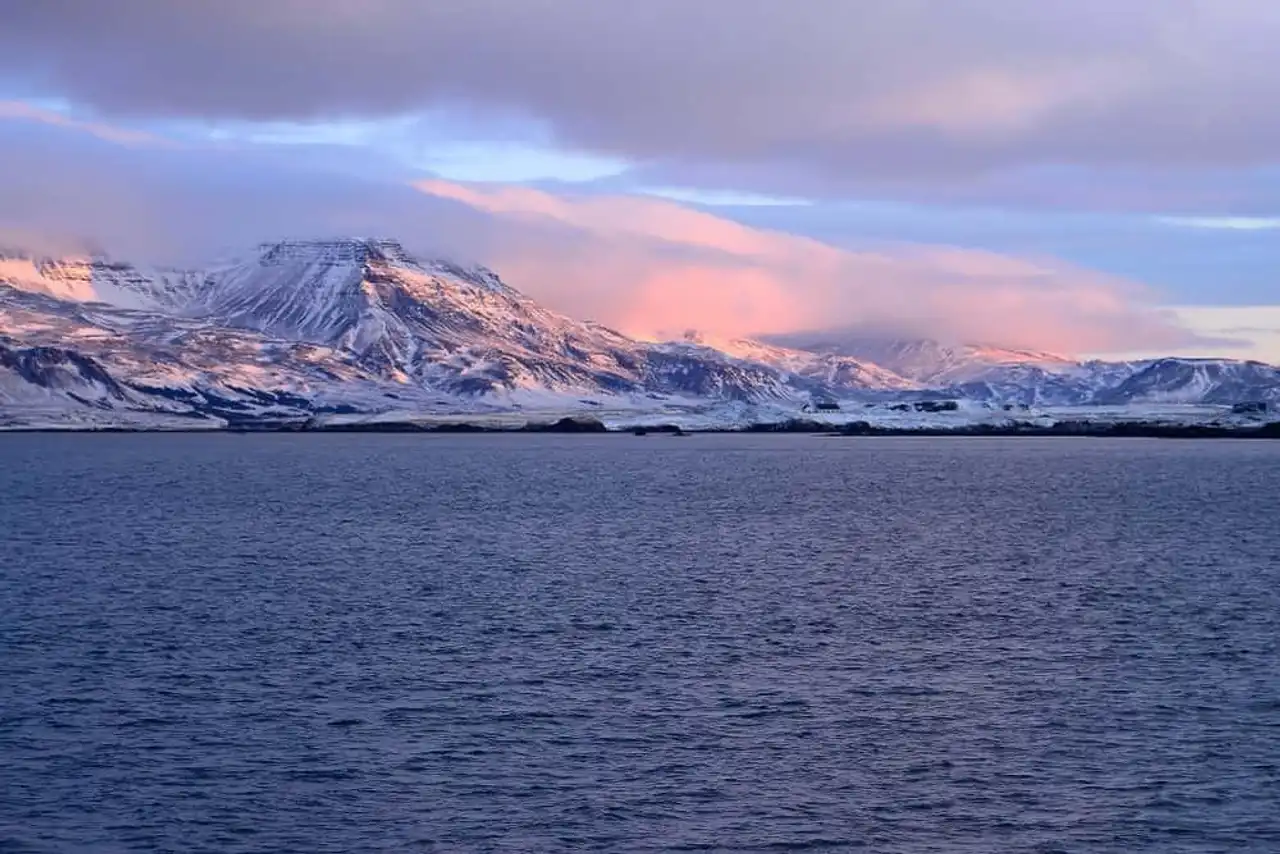
Bay of Faxafloi, Iceland - Photo credit: Shutterstock – Paul B. Moore
Finally, it is on the beach of Barður that Flóki decides to elect camp, accompanied by his three companions, and some cattle. After a difficult winter for Vikings still unused to such a harsh weather, the few animals brought by the latter succumb, and the reserves are getting smaller. Spring, also offering a mild climate, is a new test for Flóki and his men.
Then, the explorer decides to go to the conquest of this new country, hoping to find more welcoming lands. Courageous, it is only that he climbs a high mountain in order to find a point of view overlooking the entire territory. Only, after such an effort, his disappointment is immense. The earth, which surrounds it with loss of sight, is white, glazed, hostile... unexploitable. Thus, he became the first to name the country “Ice land”, land of ice, which will eventually become “Island”.
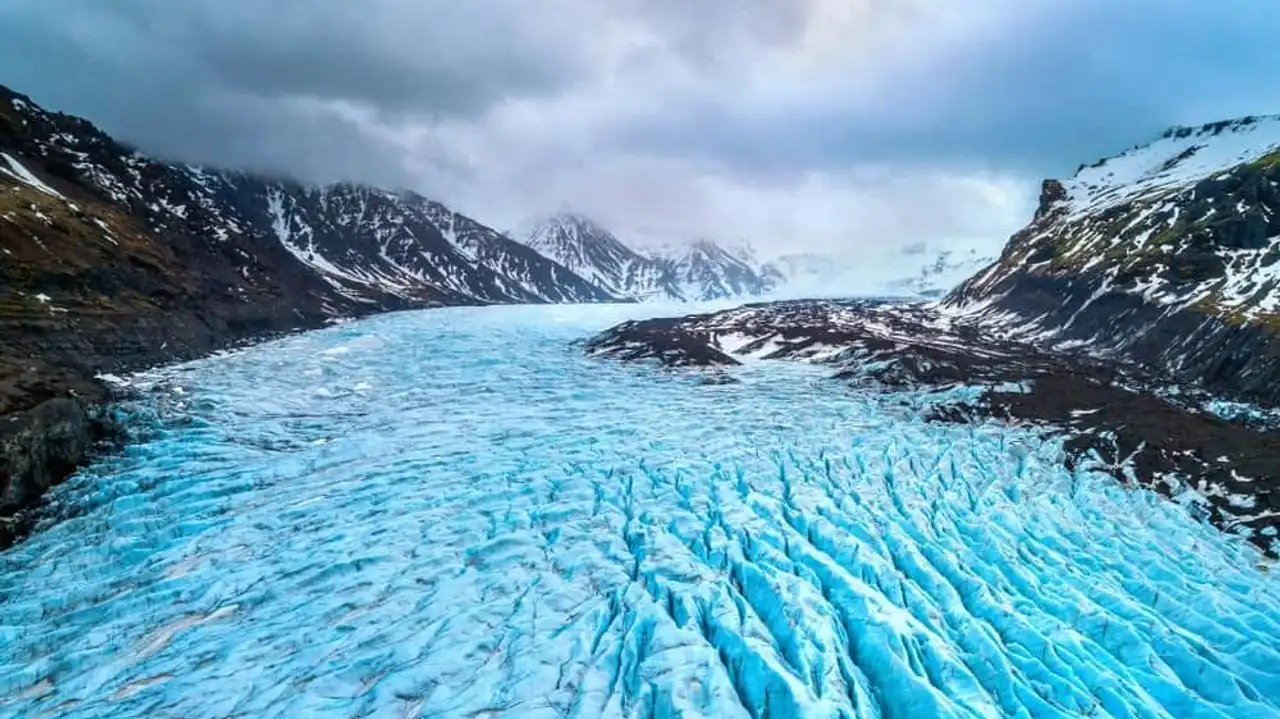
Skaftafell Glacier, Iceland - Photo credit: Shutterstock – Guitar photographer
Back to camp, Flóki to the coral resigns to wait for better days, to take the sea to return to Norway. Unfortunately, the seasons are difficult and the unstoppable sea, which forces Floki and his crew to wait another year on this land. Finally back to Norway, and when he is questioned about the value of these divine lands, Flóki explains that they were worthless. His companion, Herjólfur, confesses that Iceland is a hostile land for him, which has as many defects as qualities.
Ingolfur Arnarson, the legend of Reykjavik
Flóki So will remain the first Viking to have deliberately sailed to Iceland, and even gave him the name he still bears today. Yet other Vikings have marked the history of the country.
Indeed, we are in the middle of the 870s when Ingolfur Arnarson , a Norwegian Viking, is forced to leave the country after a quarrel with the jarl Atli. But he doesn't leave alone: his friend, Hjörleifr Hróðmarsson leave his family to accompany him. They both heard the exploits of Gardnar and Flóki see an opportunity. The possibility of a bright future that will allow them to move from “dismissed” to great explorers.
It’s a real flair, because in 874 they finally land on the Icelandic coast. As they approach, Arnarson offers to the sea the wooden edges of its sacred high seat. Sculpted with the appearance of the Gods, they will drift to the shore and indicate the location of the future colony.
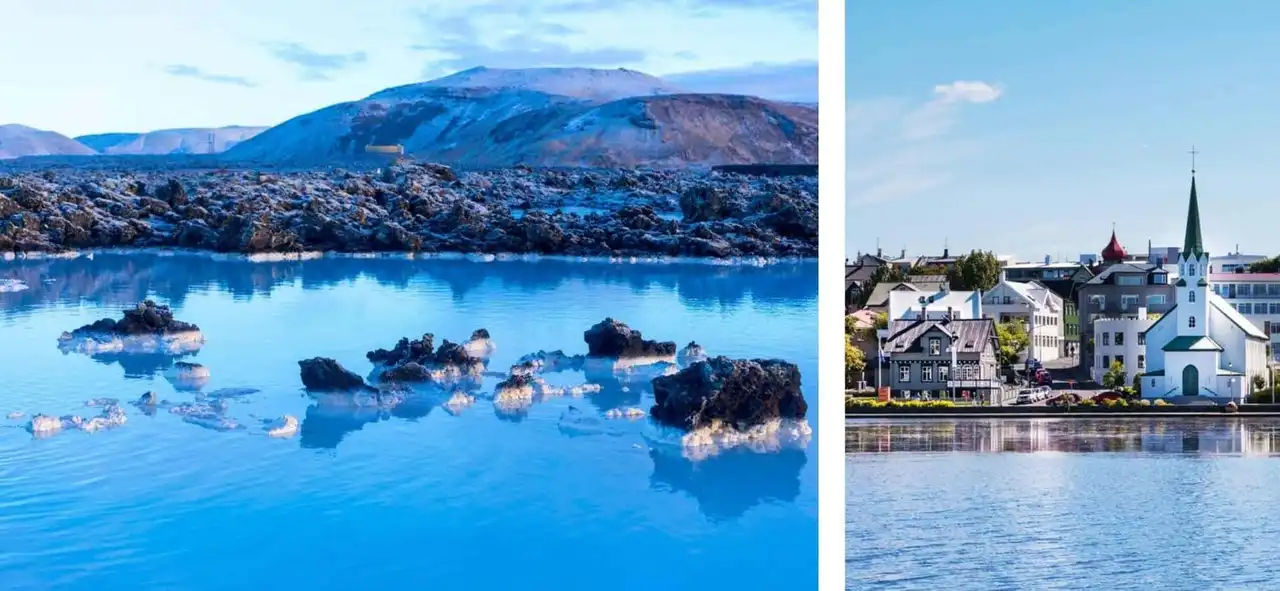
Blue Lagoon of Reykjavik & Reykjavik, Iceland - Photo credit: Shutterstock – klenger & Studio Dagdagaz
It will take more than three years for men of Arnarson to find the wooden pillars, nestled in Reykjavik Bay. This is how quickly this city became one of the country’s leading places, until it became the capital almost a millennium later, in 1845. So, Arnarson was the first Viking recognized as a permanent resident of Iceland. However, his companion and friend, Hjörleifr Hróðmarsson, will not have had this chance. He was murdered a few months after their arrival on the island by Irish slaves.
But if at that time again, the pagan people proved only their exploration capabilities, the land on which they have just arrived will completely stifle things. Indeed, the Viking people are about to change the face of the world by creating the first parliament of history.
2. Thingvellir, the legacy of a new World
Conflicts and wars of territories: the first steps towards peace
Thanks to the explorations, fabulous for the time and carried out by the Vikings of which we now know history, Iceland is gradually unfolding. Then the wonders that she hosts reveal to the pagan people, and the news spread. It won’t take more than a decade for hundreds of drakkars to moor on the Icelandic coasts, and the land to use Vikings.
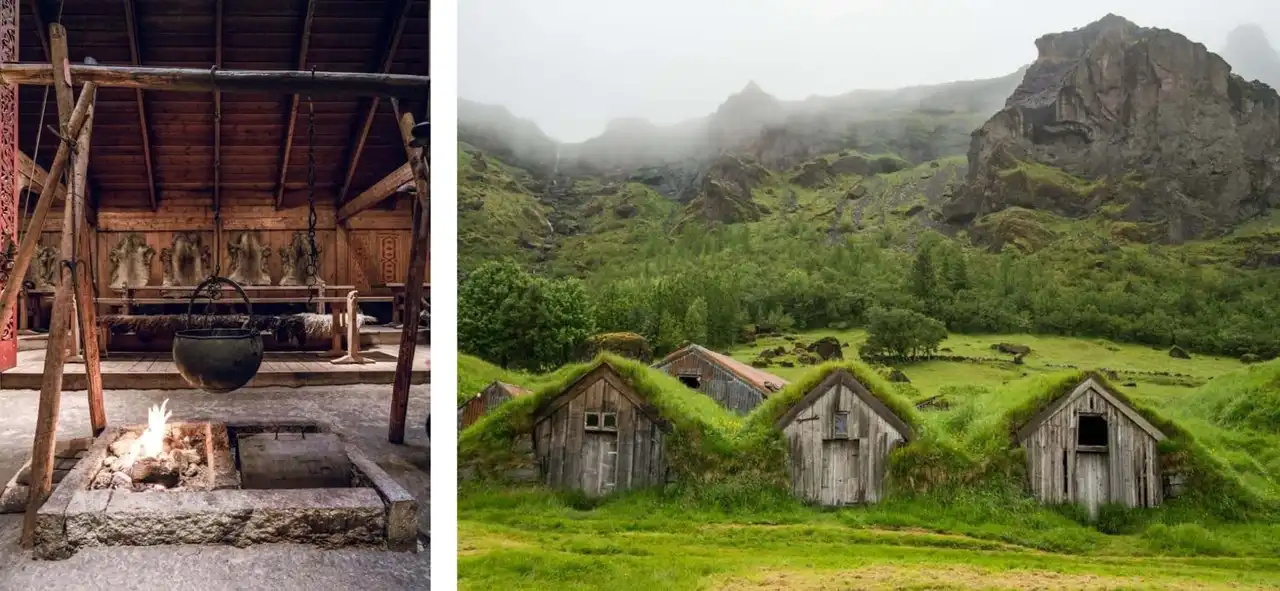
Reconstitution of Viking Houses, Iceland - Photo credit: Shutterstock – jonanderswiken & Olja Reven
Only, they come from countries, regions and so from different societies. Norwegians, Swedes, Danes... Each group of Vikings necessarily has different habits, customs and living arts.
Thus, obviously, during the first years, conflicts of egos and wars of territories emerge, especially with the descendants of Ingolfur Arnarson , in the meantime became the most powerful family of Iceland. Conflicts that will eventually lead to the greatest social invention of the Viking population. It is above all to counter this expansion and in the fear of having to undergo a new royalty that conflicts cease, and that newcomers combine.
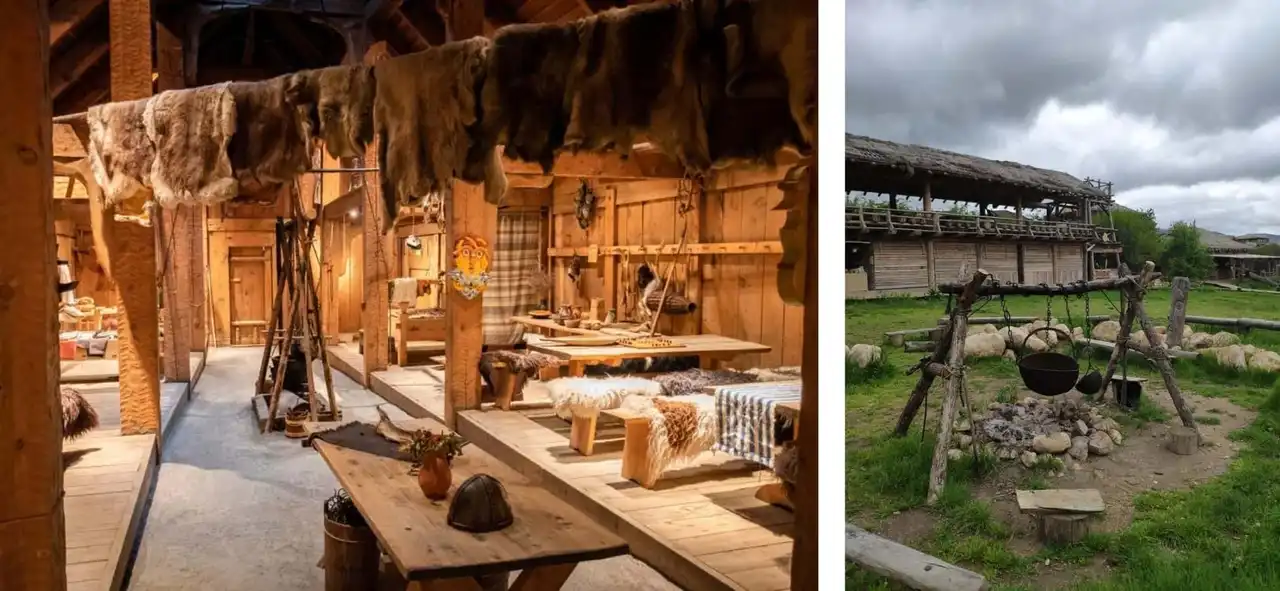
Reconstitution of Viking Houses, Iceland - Photo credit: Shutterstock – Matt Ledwinka & Mars0hod
Then, around 930, the decision to create a general assembly is taken: so was the Icelandic Free State. Everything then accelerates. Several emissaries are responsible for traveling to their native country to study the laws. The objective is to agree to create new ones for all peoples living in Iceland. Also, a place for this assembly must be found.
Accessible easily by all peoples, this place must allow all to gather, share but also celebrate. And as often in life, everything is a matter of timing. While the search for this place is more complex than expected, a farmer, residing in the Thingvellir area, is tried at the same time for murder. In addition to a fine, he was forced to abandon his land, which then became public property.
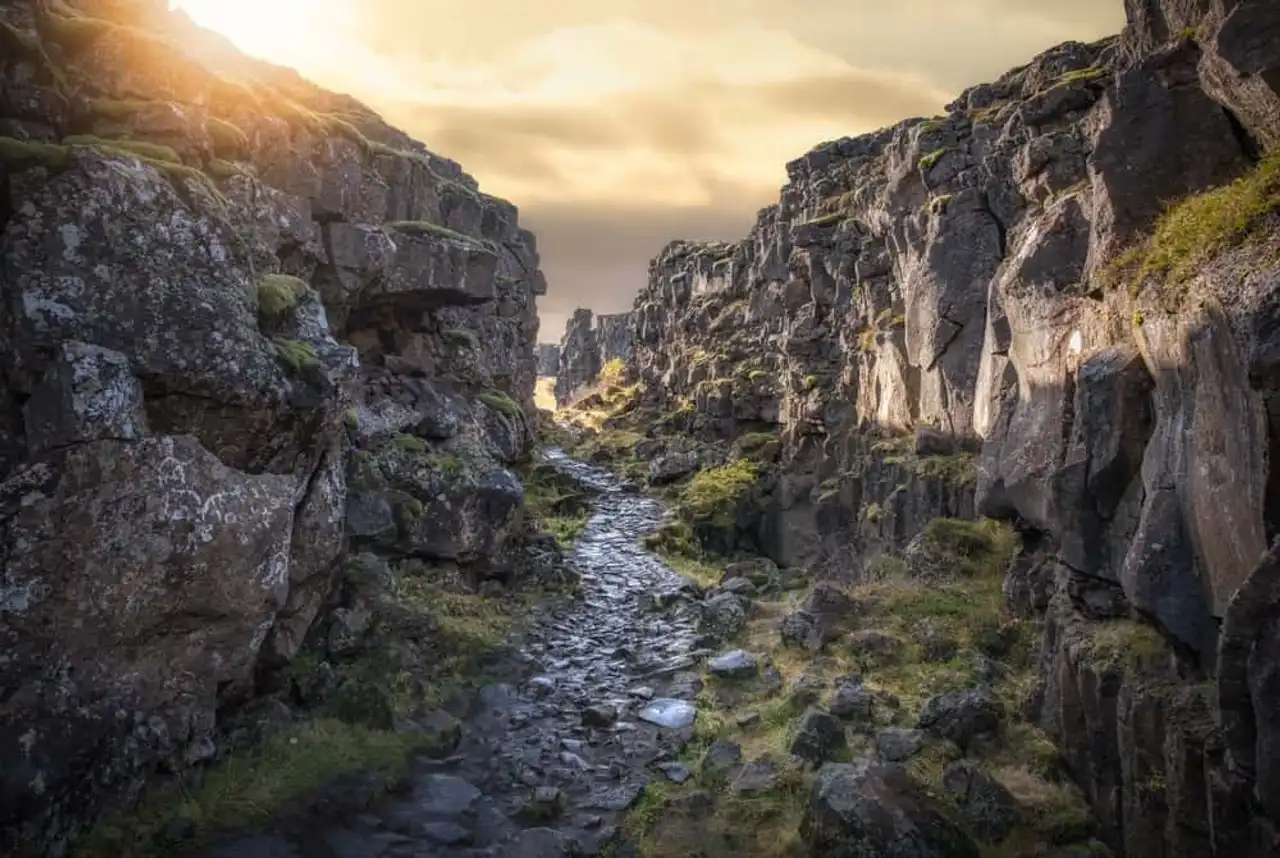
Thingvellir, First Parliament of History, Iceland - Photo credit: Shutterstock – Mike Ver Sprill
Perfectly located between the most populous regions, it has wood for fire, meadows for horses. Above all, it is located in the hollow of a rocky fault, creating a perfect echo for the speakers of the assembly to be heard from all.
Thingvellir, the oldest parliament in history
We are in 930, in Thingvellir, Iceland, and the Vikings have just created the first parliament of history. An assembly composed of 36 local chiefs, clans with various influences, and bearing the name of Althing .
Thus, each year, hundreds of Irish Vikings – landowners – meet at the summer solstice for a period of fifteen days, in order to flatten all the quarrels and rancours present between the different clans. A president is elected for 3 years, and holds the legislative and judicial power for all Iceland. On the other hand, the executive power remains in the hands of each clan leader.
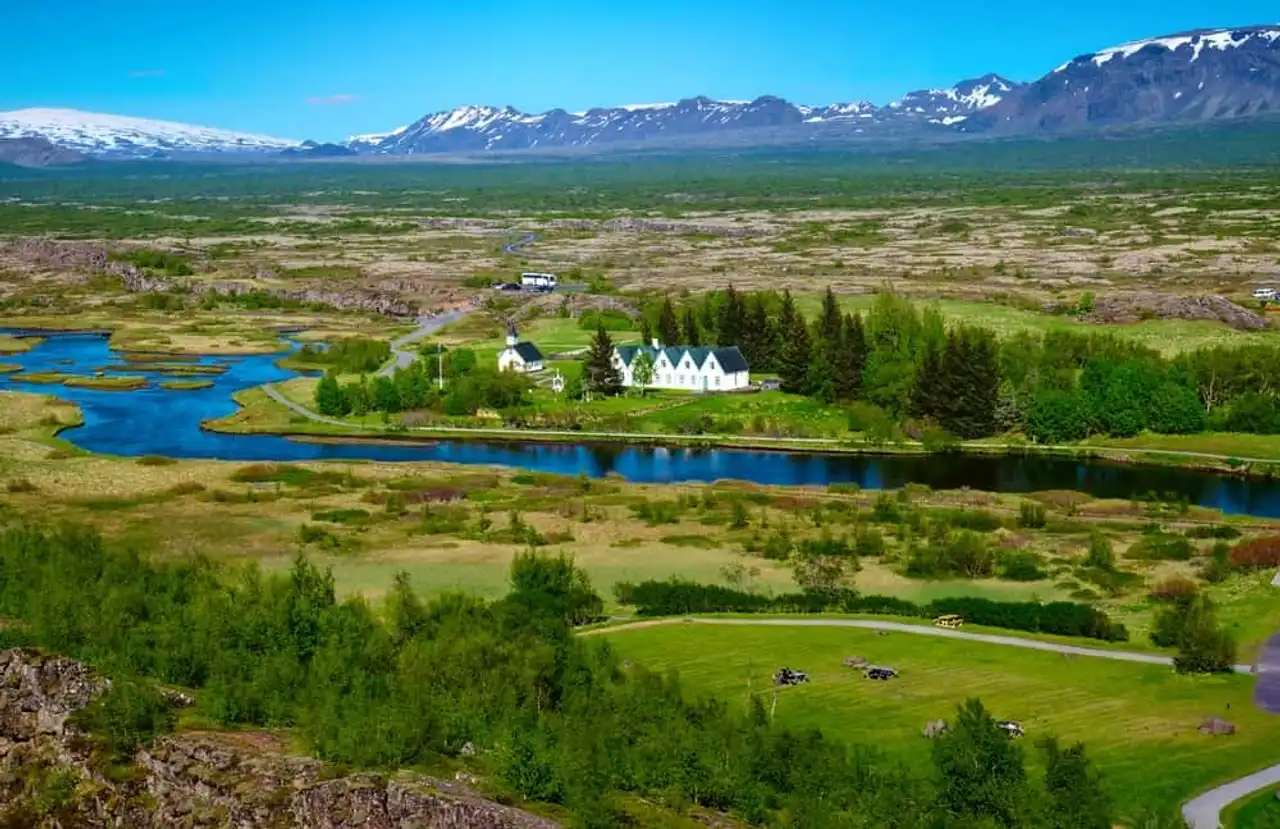
Thingvellir National Park, Iceland - Photo credit: Shutterstock – elxeneize
The President, appointed "Lögsögumad" - the one who says the law - has the most important role of this assembly. First of all, the latter was responsible, every year, for reciting a third of the country's laws, so that no one would forget them. He then stood next to the “Moor of the Law”, and listed each of the laws that had not been mentioned in the previous two years. Indeed at the time, the Gentiles have no written text of law. Remember, the first text written from the hand of the "Vikings" goes back to the Landnámabók, which appeared almost two centuries later...
But if at Althing , we settle conflicts in a rather light and organized atmosphere, we find ourselves there especially for feasting. Games, dances, horse races, and above all, transmissions of Viking stories. The beginning of the sagas! So we talk about the big one. Ragnar Lodbrok and his great English invasions, his legendary courage and his death in a snake pit, his smile on his lips, ready to join his gods in Valhalla.
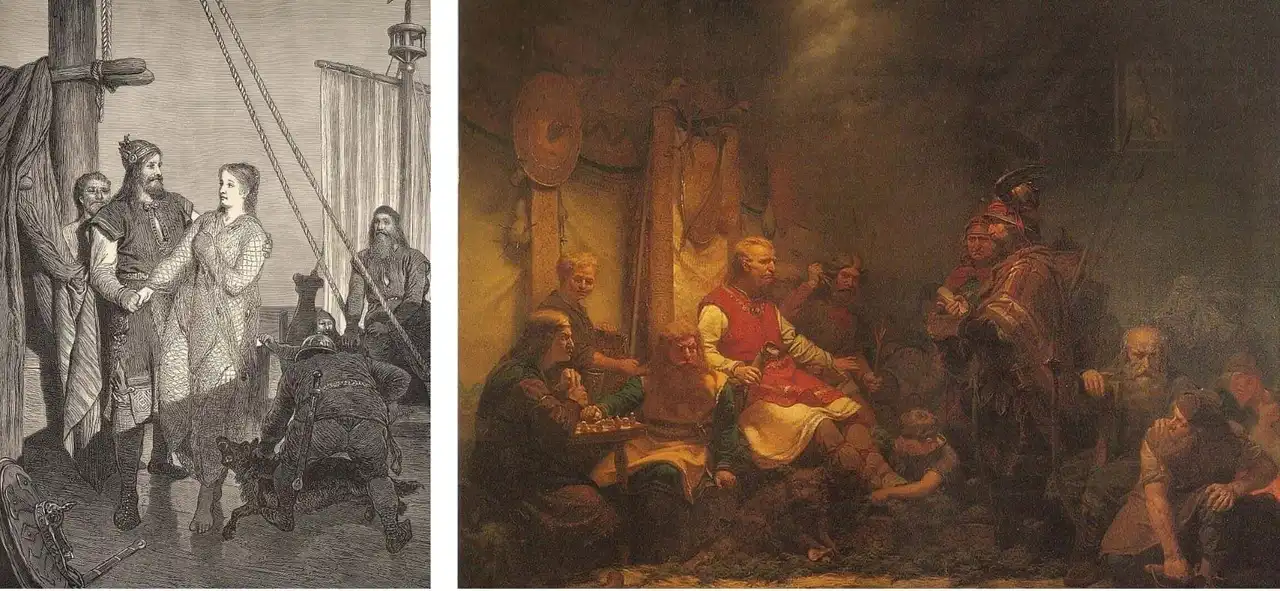
Portraits of Ragnar Lodbrok - Photo credit: Wikipedia – Hugo Hamilton
He, the legendary Viking, who had initiated the Christianization of his people, in order to make it a cultured and thoughtful civilization, peacemaker.
The great decision of Thingvellir
The most important decision taken by the Assembly of the Althing will remain the one that has completely changed the history and the future of the Vikings. In the year 1000, two goðar – clan leader – Icelanders speak near the rock of the law, trying to convince the Icelanders to Christianize themselves, as they promised to the then Norwegian king, Olaf Tryggvason.
But the Vikings are not for, and the debates are painful. Gissur le blanc , one of the goðar , relies on memory Ragnar Lodbrok to justify this choice, leaving by the same occasion some Vikings in full doubt. After a night of uninterrupted discussions, it is to the president, the "Lögsögumad" slice. The decision is made: in this year 1000, the Vikings become Christians. However, it gives those who wish it the right to perpetuate the pagan worship, but in a certain discretion.
If the history of Vikings then takes many detours to disappear, the Althing It's a long time. Resistant to Norwegian and then Danoise’s power, the Althing nevertheless lost little by little its power until 1662. Then Iceland and its free state are subject to the absolutism of Danes. Thingvellir in turn becomes a legendary place. A place quoted in poems, such as that of Jónas Hallgrímsson in 1835, calling us the emotional power still present in Thingvellir.
So if your steps lead you one day to Iceland, take the direction of the land and walk to this Almannagjá fault. Close your eyes, and listen to him "Lögsögumad" narrate the Viking legends. Feel the smell of horses and the noise of their sabots slamming on the ground. Imagine the power of this people, so strong that you can still feel it, after more than a millennium.
3. The legendary Icelandic waterfalls
Our history, linking the legendary Viking people to the fabulous Icelandic lands, continues in the present. If the Vikings are no longer, their stories will never stop telling each other, just as the water of Icelandic waterfalls will never stop sinking.
Skógafoss
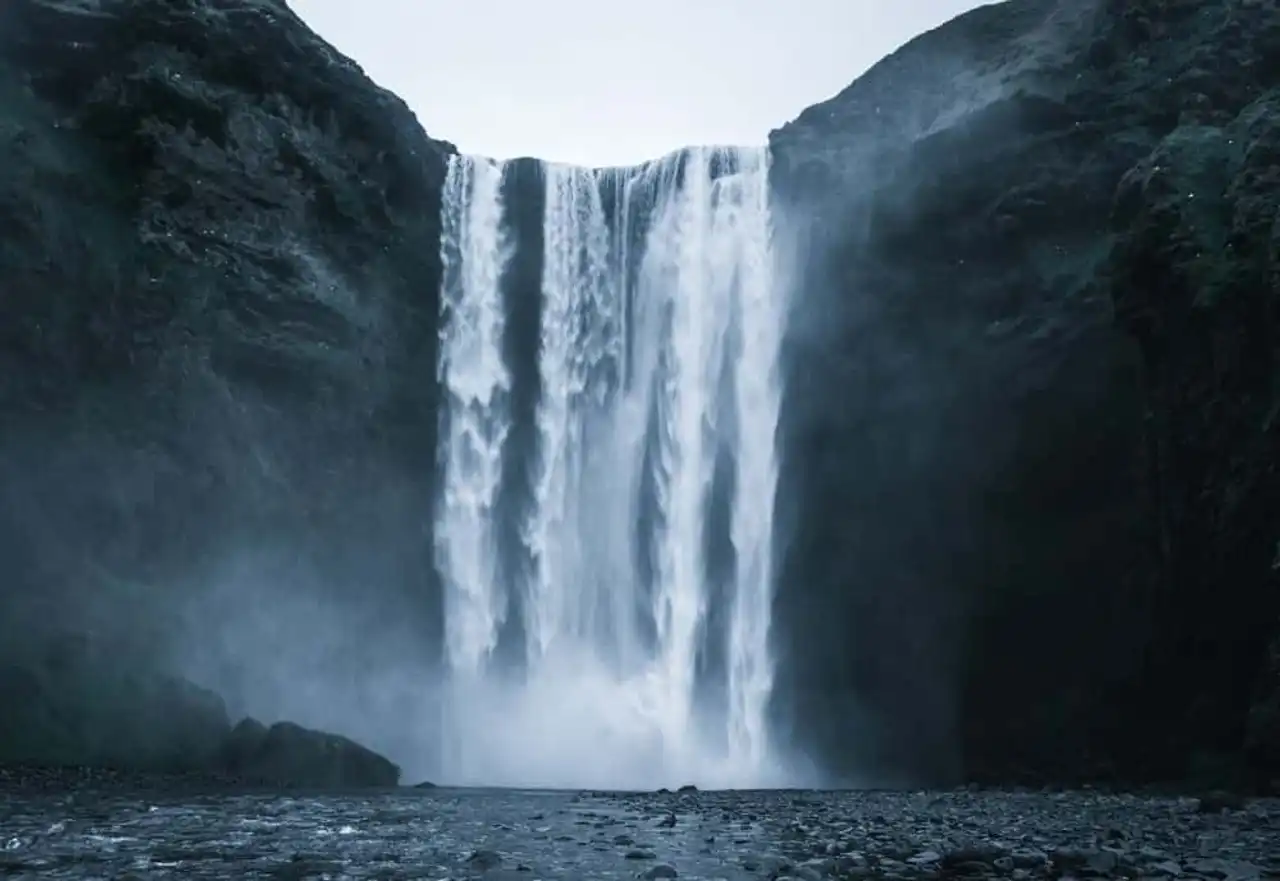
Skogafoss, Iceland - Photo credit: Shutterstock – StandARTP
The first cascade of our journey is Skógafoss, and she tells us the story of her hidden treasure. This sublime waterfall derives its name from the Skóga River – translate "forest" – and flows over a width of 25 meters, to come throw some 62 meters below, at an impressive intensity. And if it is one of the most visited waterfalls in the country, it is because it is at the origin of a legend... A Viking legend.
√ Órólfsson , a Viking from the time of the Althing, would have deposited his treasure in the greatest secret, behind the ramparts that form this cascade. A treasure that would make him who would find him the richest man in the world. A few years later, a young child, playing near the waterfall, would have seen the brilliant gold coins on the other side of the waterfall. If the child could not take the treasure, he still managed to extract a handle. A small piece of treasure you can admire at the Skógar Museum.
But finally, when you pass by this sublime waterfall, you might realize that the real treasure of the place is in its majesty. Open your eyes, stretch your ear, and become rich of the powerful energies that escape from the waterfall.
Godafoss
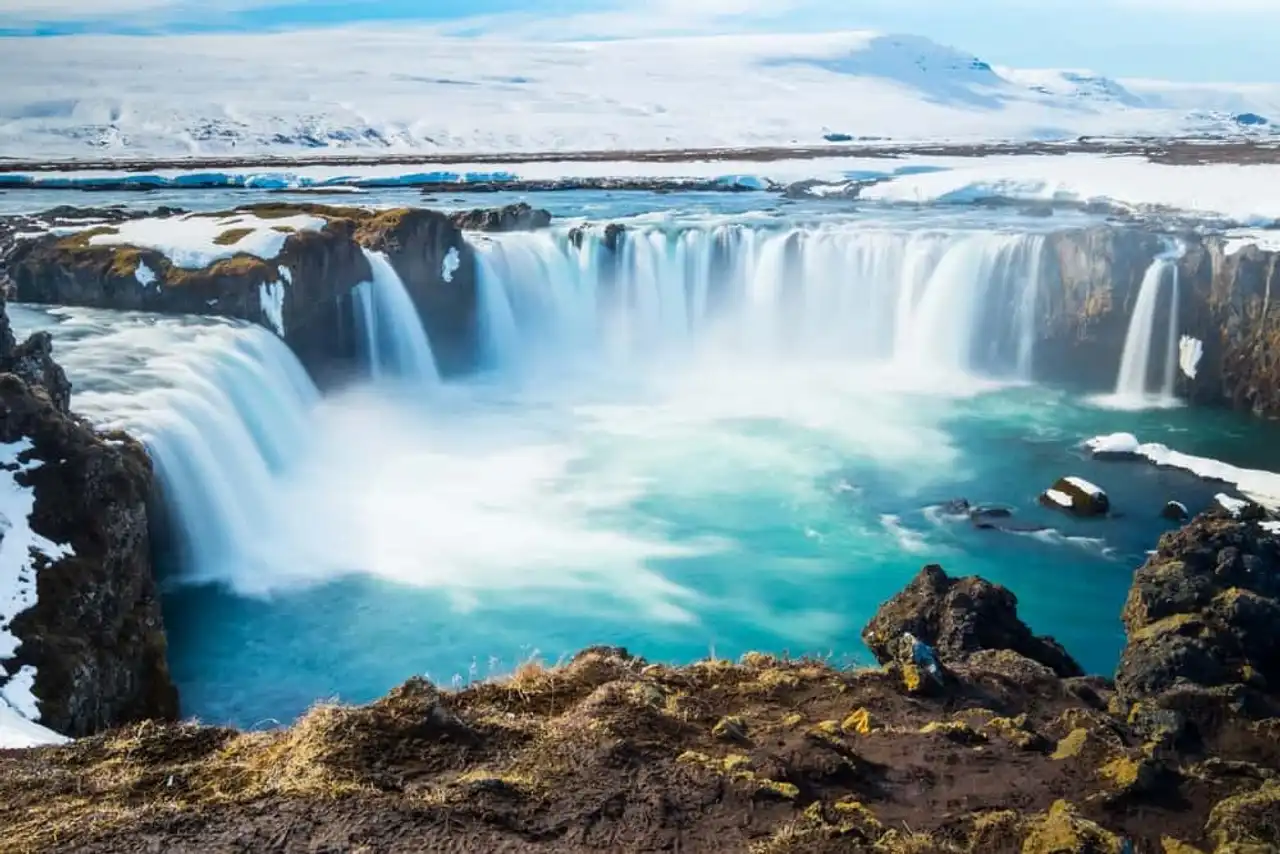
Godafoss, Iceland - Photo credit: Shutterstock – Puripat Lertpunyaroj
While our trip to the Vikings trails in Iceland is coming to an end, we still have some wonders to discover. After the power of Skógafoss, it is all in the north of the country of ice that we lead, in search of Godafoss, the cascade of the gods.
Large of 12 meters, high of 30, its flow is as intense as the noise that extracts from it. Here, impossible to hear each other speak, breathe, or even think. You are almost oppressed by the power of water that seems to want to attract you to the bottom of its abyss. As if you were trying to pull your soul into the deepest of these troubled waters.
And the shock is all the stronger when you learn the history of this place, more than a millennium old. Remember, we are in the year 1000 when the Althing makes the decision for the Icelandic Viking people to convert to Christianism. So, to show the example, the "Lögsögumad" (he who made the final decision) goes to the top of this cascade, and throws all the representations of the ancient pagan gods into water.
This is how this cascade was named Godafoss, the cascades of the gods.
Seljalandsfoss

Seljalandsfoss - Photo credit: Shutterstock – Olga Gavrilova
In the image of the pagan civilization, it is the hollow of this cascade that ends our history. Indeed, it is in this sublime place that we could assimilate the end of the Viking era, at least on Icelandic lands.
We are then at the birth of the second millennium, and the Vikings are no longer a pagan population, but a Christian people. While some continue to worship their former gods, practice is increasingly considered an act of rebellion against the king of Norway.
So, the last Vikings who did not want to give up their beliefs, refuted to the south. A leak that will menerate them to this place, fabulous, that is the stunt of Seljalandsfoss. The characteristic of this waterfall is in the possibility to bypass it to hide behind it.
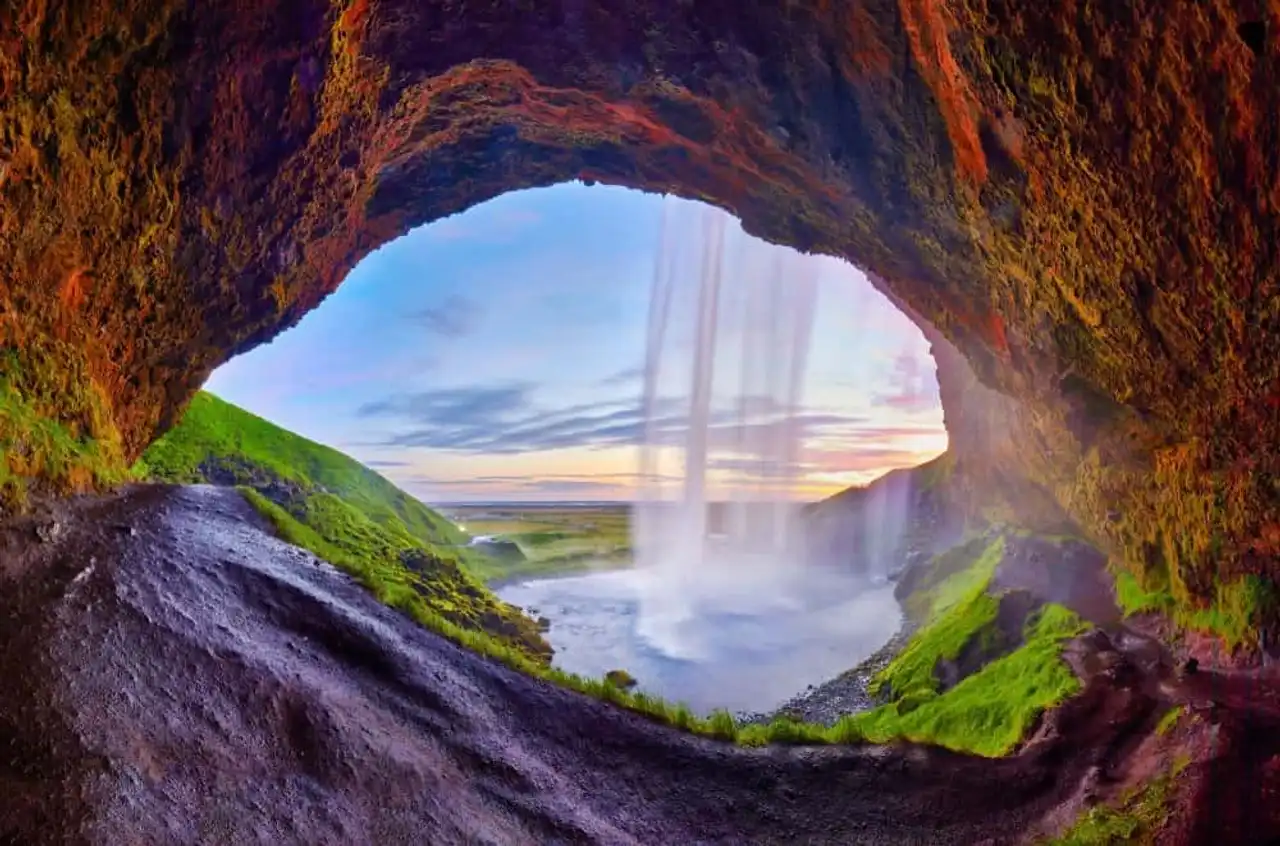
Seljalandsfoss, Iceland - Photo credit: Shutterstock – Zebra-Studio
According to the legend, it is here, cut off as during their famous combat technique, and in a very small population like their first steps on these Icelandic lands that the Vikings slowly turned off, hung to their conviction.
But if the Viking people no longer exist, their legend remains fiercely attached to these wild, unique, precious landscapes. From Snaeland discovered by Naddoddr to the Iceland of Flóki, the Icelandic legends are therefore closely related to those Vikings, the people of explorers, thirsty for discoveries and wishes.
Travel needs that do not stop here, and will soon lead them to the discovery of the American continent, half a century before Christopher Columbus. To follow...
Read episode II: The Greenland Vikings in America!
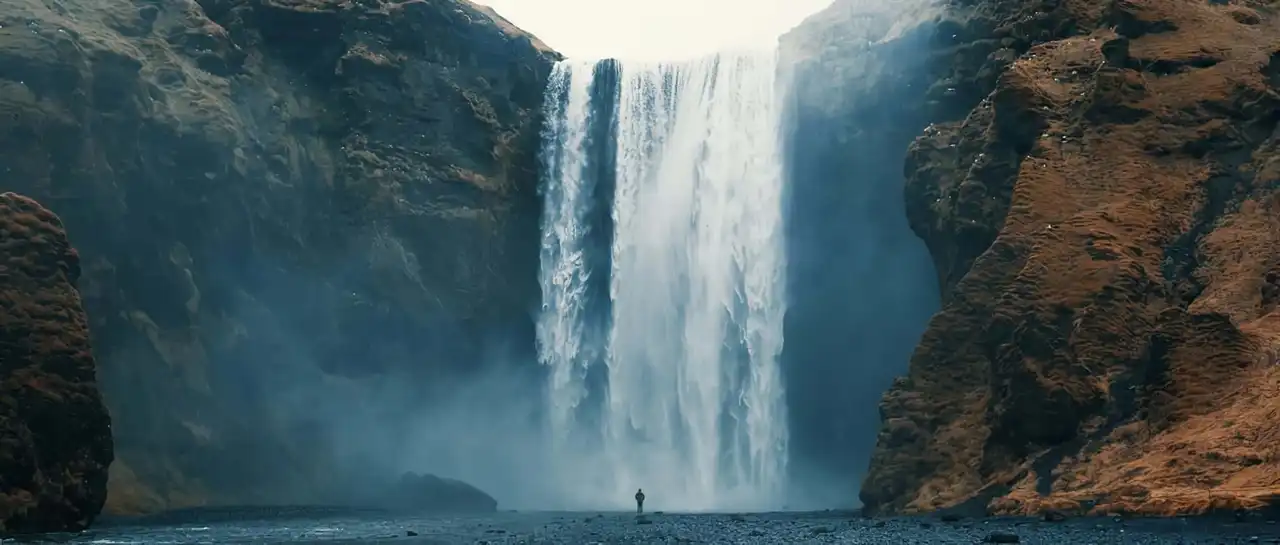





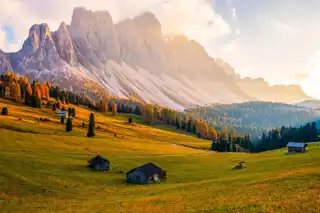
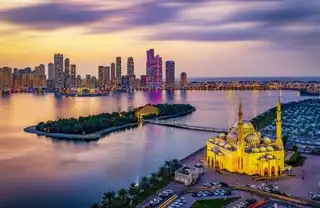
Loading comments ...